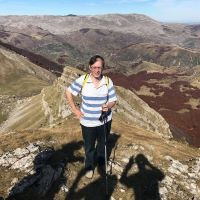Dejan Milošević
University of Sarajevo, Bosnia and HerzegovinaFor seminal contributions to the theory of laser-matter interaction and attosecond science, and the advancement of science education in Bosnia and Hercegovina.

Dejan Milošević was always interested in science and from a young age wanted to discover the secrets of nature and search for solutions to problems. Throughout his elementary and high school years, he competed in science competitions. These competitions were also a part of his later career as he led the Bosnia and Herzegovina Team at the Physics Olympiad in 1996 and 1997. During his junior year, he qualified for the state competition in physics, which solidified his goal of becoming a physicist.
He completed a bachelor’s degree at the University of Sarajevo in 1981 and continued there as an assistant. At that time, postgraduate study was not offered in Sarajevo, so Dejan completed master’s and doctoral degrees at the University of Belgrade in Serbia. However, he never moved to Belgrade. Instead, he completed the majority of his studies from Sarajevo, traveling once every few months to meet with his advisors and take exams. During this time, he also worked at the optical company, Zrak, where they had modern computers and technology not yet available at the university. This enabled Dejan to design his own programs, commenting, “This was important for my future career as a scientist because I learned how to obtain numerical results and to (theoretically) simulate experiments.”
At this point in his career, the war in Bosnia and Herzegovina had broken out, and Sarajevo was under siege. During this time, he continued his scientific research in isolation and submitted his results with a journal through the help of a humanitarian organization. Only after the war ended in 1995 did Dejan learn that the paper he sent was published. This enabled him to get postdoc positions, which he held in various locations until 2000, when he was offered his permanent position at the University of Sarajevo, where he remains today.
By now Dejan’s group, SAMOPHYS (Sarajevo Atomic, Molecular & Optical Physics), has a rich mix of collaborations all over the world which helps them realize their theoretical results. The group also helps experimental collaborators to simulate their experiments. He shares an example: “I am presently the leader of the experimental project at ELI-ALPS facility in Szeged, Hungary. Last year I proposed the use of THz radiation to modify strong-field ionization process, applied with a project in Hungary, and got approved. Now they will perform this experiment under my guidance and hopefully will confirm my theoretical predictions.” Through his myriad collaborations, he can travel worldwide to meet with other scientists, recently visiting London, Dresden, Jena, and Berlin. His position in science has been recognized and he has been elected as a full member of the Academy of Sciences and Arts of Bosnia and Herzegovina, as the only academician whose field is physics.
Dejan comments that this is an exciting time in his field, sharing, “Recent developments in my area of science are opening up more and more applications, in particular the interplay of strong-field physics and attoscience with quantum optics and even with quantum information science. Also, applications of the tailored fields/structured lights are important in atomic, molecular, and optical physics, as well as in condensed matter physics and chemistry.” Strong-laser-field physics has long been on the cutting edge, though. Gérard Mourou and Donna Strickland’s discovery of the CPA technique in 1985, which enabled the generation of strong and ultrashort laser pulses, occurred just as Dejan was starting his career.
Dejan describes himself as a “self-made scientist.” This moniker is one that many boast, but few can truly claim. In Dejan’s case, it is clear that he has built a career through his own perseverance and dedication, even in the face of war and isolation.
Photo Credit: Dejan Milosevic
Profile written by Samantha Hornback
